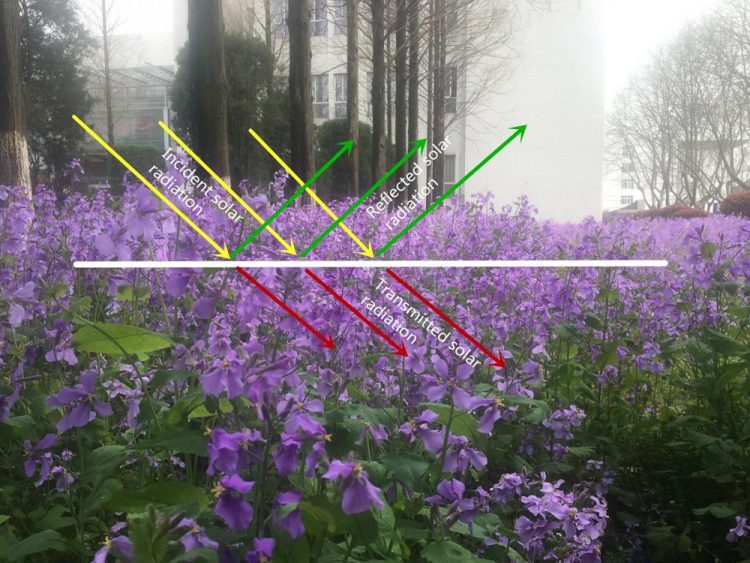A new parameterization of canopy radiative transfer for land surface radiation models

This is an illustration of canopy radiative transfer. Credit: Feng Zhang
However, the canopy varies geographically from that of dense tropical forests to the shrublands of arid desert lands, and temporally from the vibrancy of spring to the gloominess of winter. Uncertainties are abound in the processes of radiative transfer parameterization.
Dr Feng Zhang and his collaborators propose a new parameterization for the canopy phase function, which is based on the leaf normal distribution and leaf reflection/transmission, and examine the accuracy in reflection and transmission of the canopy through comparison with the benchmark result of SOSA. The findings are published in Advances in Atmospheric Sciences (Zhang et al., 2017).
“The new method,” says Dr. Zhang, “when based on Eddington approximation, can substantially improve the accuracy compared to the previously preferred hemispheric constant method, under both isotropic and anisotropic conditions. Therefore, the canopy albedo can be evaluated more accurately by the analytical solution of non-zero soil background reflection.”
Moreover, their investigation also reveals that there is a relationship between the direct radiation and the diffuse radiation of the canopy, which have been treated separately in previous studies. It is concluded that the new parameterization is well suited for applications of land surface radiation modeling.
Media Contact
All latest news from the category: Earth Sciences
Earth Sciences (also referred to as Geosciences), which deals with basic issues surrounding our planet, plays a vital role in the area of energy and raw materials supply.
Earth Sciences comprises subjects such as geology, geography, geological informatics, paleontology, mineralogy, petrography, crystallography, geophysics, geodesy, glaciology, cartography, photogrammetry, meteorology and seismology, early-warning systems, earthquake research and polar research.
Newest articles

Superradiant atoms could push the boundaries of how precisely time can be measured
Superradiant atoms can help us measure time more precisely than ever. In a new study, researchers from the University of Copenhagen present a new method for measuring the time interval,…

Ion thermoelectric conversion devices for near room temperature
The electrode sheet of the thermoelectric device consists of ionic hydrogel, which is sandwiched between the electrodes to form, and the Prussian blue on the electrode undergoes a redox reaction…

Zap Energy achieves 37-million-degree temperatures in a compact device
New publication reports record electron temperatures for a small-scale, sheared-flow-stabilized Z-pinch fusion device. In the nine decades since humans first produced fusion reactions, only a few fusion technologies have demonstrated…





















